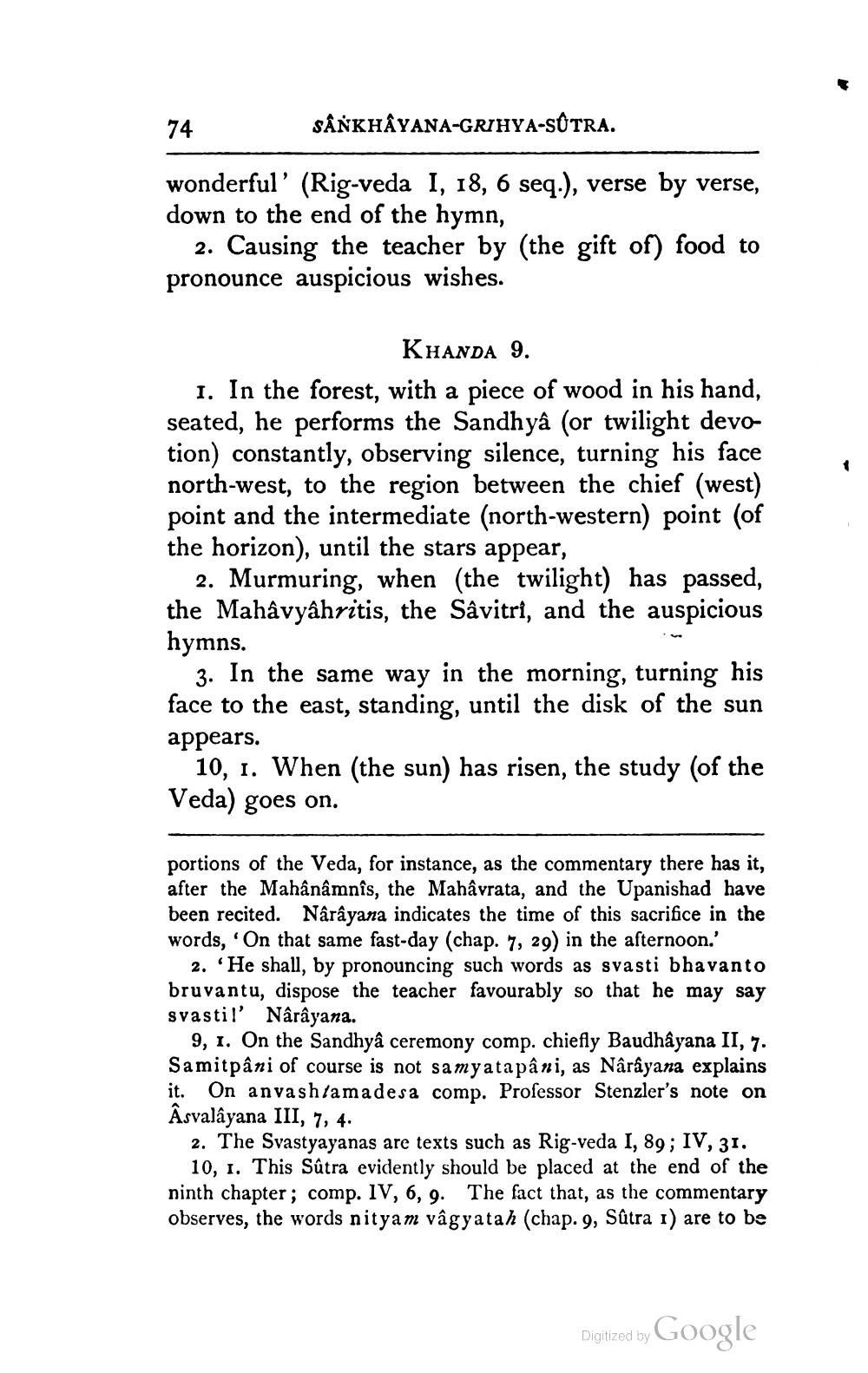________________
SANKHAYANA-GRIHYA-SUTRA.
wonderful' (Rig-veda I, 18, 6 seq.), verse by verse, down to the end of the hymn,
74
2. Causing the teacher by (the gift of) food to pronounce auspicious wishes.
KHANDA 9.
1. In the forest, with a piece of wood in his hand, seated, he performs the Sandhyâ (or twilight devotion) constantly, observing silence, turning his face north-west, to the region between the chief (west) point and the intermediate (north-western) point (of the horizon), until the stars appear,
2. Murmuring, when (the twilight) has passed, the Mahâvyâhritis, the Sâvitri, and the auspicious hymns.
3. In the same way in the morning, turning his face to the east, standing, until the disk of the sun appears.
10, 1. When (the sun) has risen, the study (of the Veda) goes on.
portions of the Veda, for instance, as the commentary there has it, after the Mahânâmnîs, the Mahâvrata, and the Upanishad have been recited. Nârâyana indicates the time of this sacrifice in the words, 'On that same fast-day (chap. 7, 29) in the afternoon.'
2. 'He shall, by pronouncing such words as svasti bhavanto bruvantu, dispose the teacher favourably so that he may say svasti!' Nârâyana.
9, 1. On the Sandhyâ ceremony comp. chiefly Baudhâyana II, 7. Samitpâni of course is not samyatapâni, as Nârâyana explains it. On anvash/amades a comp. Professor Stenzler's note on Âsvalâyana III, 7, 4.
2. The Svastyayanas are texts such as Rig-veda I, 89; IV, 31. 10, 1. This Sûtra evidently should be placed at the end of the ninth chapter; comp. IV, 6, 9. The fact that, as the commentary observes, the words nityam vâgyatah (chap. 9, Sûtra 1) are to be
Digitized by Google




